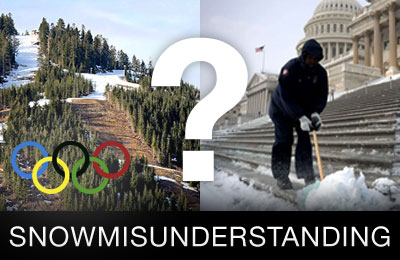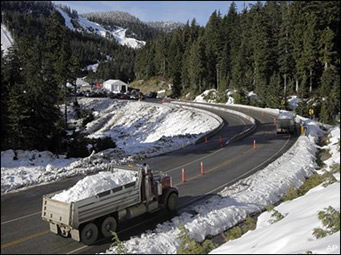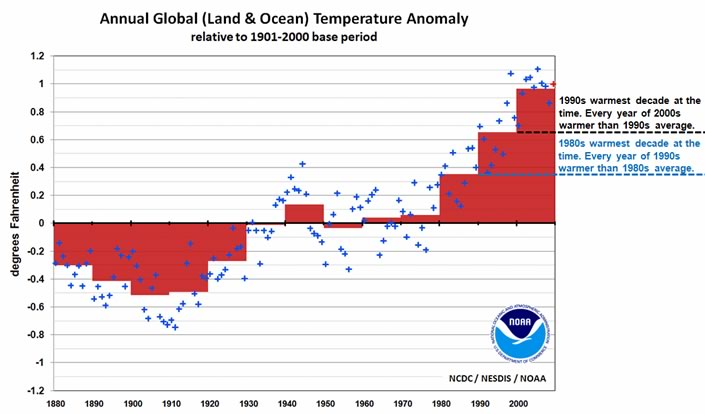Snowmisunderstanding

Get the facts on Snowmageddon, Snowpocalypse as well as the Snowless Olympics.
 This year, record snowstorms have hit the Mid-Atlantic and the East Coast. Meanwhile, it was so warm in British Columbia that the Winter Olympic Games needed to truck in snow in order to hold their events. So how does this relate to climate change? Here are some key facts:
This year, record snowstorms have hit the Mid-Atlantic and the East Coast. Meanwhile, it was so warm in British Columbia that the Winter Olympic Games needed to truck in snow in order to hold their events. So how does this relate to climate change? Here are some key facts:
First, global warming does not mean the end of winter.
Global warming doesn’t change the tilt of the earth that is responsible for our seasons. February will still have snowstorms.
Second, the snowstorms along the East Coast do not disprove global warming. More powerful storms and heavier precipitation –including snow –are consistent with climate change.
In fact, more powerful snowstorms are exactly what many scientists have predicted would happen as the planet warms. TIME Magazine recently reported:
“The 2009 U.S. Climate Impacts Report found that large-scale cold-weather storm systems have gradually tracked to the north in the U.S. over the past 50 years. While the frequency of storms in the middle latitudes has decreased as the climate has warmed, the intensity of those storms has increased. That's in part because of global warming — hotter air can hold more moisture, so when a storm gathers it can unleash massive amounts of snow. Colder air, by contrast, is drier; if we were in a truly vicious cold snap, like the one that occurred over much of the East Coast during parts of January, we would be unlikely to see heavy snowfall.”
The truth is the amount of precipitation falling in heavy downpours has increased 20 percent in the United States and 67percent in the Northeast over the last 50 years. This heavy precipitation can be costly, as we witnessed in 2008 when a 500 year flood hit the Midwest, and in 2009 when parts of the Southeast experienced record-breaking floods.
Third, weather and climate are different.
Weather is the mix of conditions (wind, temperature, cloudiness, humidity, etc.) occurring over the short-term (minutes to months). Climate is the average weather occurring over many years. Between weather and climate, there are other cycles like El Nino, which occurs every few years.
This is an El Nino year, which helps explain the snow and chilly temperatures seen in Southern states. As the Los Angeles Times points out:
“The cold weather spells in the East have been linked with an "El Nino" year and a shift in the arctic oscillation that sent a jet of cold air down into the Eastern United States and elsewhere, all cyclically occurring events regardless of the overall trend in average planetary temperature, as the National Oceanic and Atmospheric Administration pointed out recently.”
“Lost in the hype over the East Coast cold snap around the Christmas holidays was the fact that at the same time, parts of Alaska were unseasonably warm. And the record cold that descended as far south as Florida in January? Globally, January 2010 was the warmest January on record, based on satellite data that date to 1979, according to AccuWeather.com.”
So while some global warming deniers have tried to use the recent snow storms as a way to disprove climate change and slow action on Clean Energy Jobs legislation in Congress, the readings on the thermometer tell a far different story. We just had the hottest decade on record, beating a record set in the 1990’s which shattered the record set in the 1980’s. This is a dangerous trend, one that mirrors increases in carbon pollution around the globe. It’s time to get serious about confronting this problem by moving to clean energy with the speed of an Olympian.

Update: The Washington Post's Capitol Weather blog had a recent story about global temperatures and the February snowstorms, including the following graphic:

Average surface temperature departures from average (in degrees Celsius) during the period from Dec. 2009-Feb. 2010 (includes sea-surface temperature). Credit: NASA GISS.
The Select Committee was active during the 110th and 111th Congresses. This is an archived version of the website, to ensure that the public has ongoing access to the Select Committee record. This website, including external links, will not be updated after Jan. 3rd, 2010.
![]() del.icio.us
del.icio.us
![]() Digg this
Digg this
![]() Reddit
Reddit
![]() Stumbleupon
Stumbleupon



